Me

Born and raised in Australia, I am 43, live in the south-eastern suburbs
of Melbourne close to the beach. I have been into technology from a very
young age, sparked by the 1980’s cartoon Transformers of all things!!
I work as a tech-lead for an international fin-tech company names Iress,
prior to that I have worked as a developer, IT consultant, in marketing
and have even owned a chain of hair salons for 13 years.
Even though I work in a senior IT position, and other than extensive
experience I have had little formal industry education or qualifications.
As part of a professional improvement commitment, I am working on fixing
this in view of taking on more senior positions at my current or future
firms.
I have two amazing boys and a very supportive wife, especially when I
talk in technobabble or install overly complicated AV or lighting systems
all over the house.
|
Name:
|
Matt Kellock
|
|
E-Mail:
|
Prefer not to get scraped by spambots!
Please reach me here
|
|
Language spoken:
|
English
|
|
RMIT student number:
|
s3812552
|
History

My interest in IT started as a child, of all things because of the
1980’s Transformers cartoon! Going to a catholic primary school, we had
mass each week, especially boring to a 10-year-old boy. During the sermons
I used to daydream about how it was possible to build my own transformer,
this led to my lifelong fascination in programming and computers.
My first computer was a second-hand Commodore 64 and my Dad’s IBM 8086,
I taught myself rudimentary BASIC on the C64 and programmed simple batch
scripts on the PC. Whilst at school, I ran from class to class diagnosing
problems with the Apple IIe’s and even got to program Space Invaders from
scratch on one of them!
I have operated professionally in IT, mainly in corporate or enterprise
development since the late 90’s, have been through two dot com booms and
busts and seen many languages, frameworks and companies rise and fall.
So, after 20+ years working in IT, why a degree now? I want to move into
upper management positions, particularly as a CTO. Providing value and
seeing change happen, drives my work, the larger the scale I can make that
happen, the more enriching I find my work. I need a degree to at least
apply for these positions, however, would also like to continue to
management post graduate degrees after completing a ComSci qualification.
As part of completing my degree, I hope to round out any rough edges in
my skill set and exit as a qualified developer. I chose RMIT due to its
brilliant programme and progressive program and look forward to the years
ahead.
Career

The Chief Technology Officer (CTO) reports to the CEO and is a key
member of any large and/or technology driven company. The role encumbers
technology strategy, policy, research and development, client targeting
and support, product development (especially for SaaS providers),
technology finance, and a raft of other executive functions.
Technological strategy, change management and uplift have always been
exciting to me, to see uplift happen in an organisation is immensely
rewarding, and in a CTO’s position, you’d be instilling the largest volume
of this type of change.
CTO Position Ads
I have a included several CTO position advertisements below:
CTO Skills Breakdown
From the positions listed above, prior research into the position and
experience working with CTO’s and other company executives, I estimate the
skills and qualifications to be as follows.
I have included a 👍 where I believe I possess the skills necessary for
the position and a ❌ where I do not.
- Educational qualifications
- ❌ Bachelor of Information Technology
- ❌ Masters in Information Technology Management
- ❌ Associate level certification in AWS
- ❌ Agile Certified Practitioner
- ❌ Other relevant certifications as they become necessary…
- Executive presence
- 👍 Self-motivated
- ❌ Articulation ideas to technical, non-technical audiences,
corporate and junior staff
- ❌ Influencing skills
- 👍 Collaborative and team orientated
- ❌ Diplomacy skills
- ❌ Negotiation skills
- Management
- 👍 15 years work experience
- ❌ 5 years in senior engineering management
- 👍 Ability to build and retain technical teams
- Strategic skills
- 👍 Excellent planning and organisational skills
- 👍 Demonstrated ability to understand organisational context
- 👍 Ability to develop digital strategy and execution roadmap
- 👍 Experience working within both large-scale, complex corporates
and/or start-up environments
- Client and product skills
- ❌ Client focused
- ❌ Extensive experience guiding product direction
- Technical skills
- 👍 Extensive commercial experience building applications,
microservices and cloud tech
- 👍 Understanding of the current and emerging global technology
trends
- Process skills
- 👍 Experience with an agile methodology
- 👍 Excellent analytical, evaluative, and problem-solving abilities
- 👍 Experience leading full stack projects
Skills Gap Strategy
Looking at the above skills gaps, I have some work to do around lifting
my educational qualifications, executive level experience, executive
presence, client, and product skills.
Continuing educational qualifications through tertiary education and
external management/technical certifications will close most of the
educational gaps, taking these skills and applying them in the workplace
will cement them.
I can look to obtain executive presence through continuing to work with
executives in organisations, personal coaching/mentoring, reading up on
the subject and their associated skills and formal training through
management institutes and/or an MBA qualification at a later stage.
Additionally, I must continue refining my current skill set, ensuing
that I am not subject to the Dunning-Kruger effect. I can help ensure I continue
to refine my skills through working with multiple teams and projects,
self-education, and additional technical skill qualifications.
Back | Link to ad
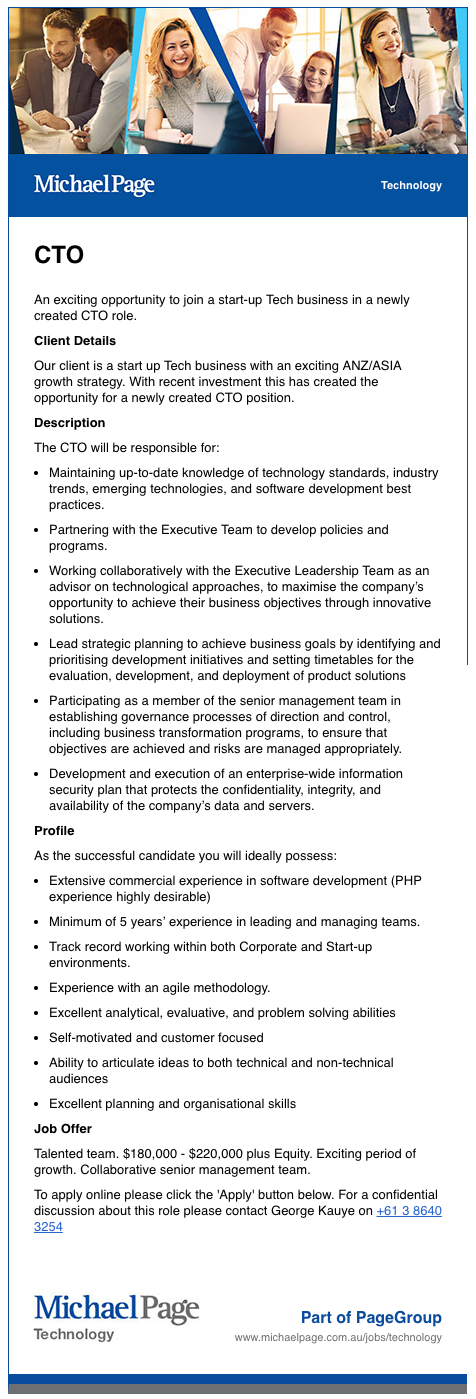
Back | Link to ad
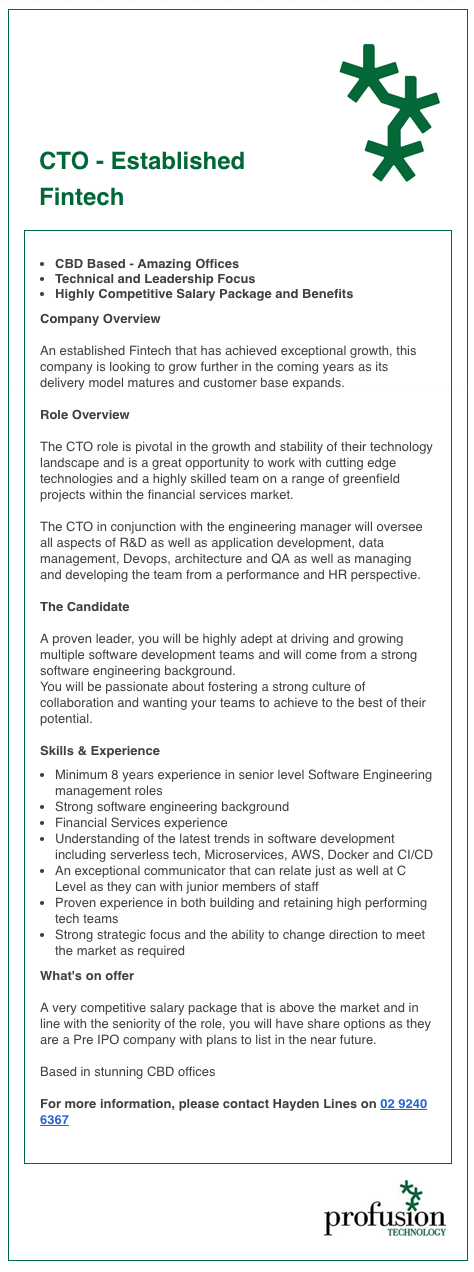
Back | Link to ad
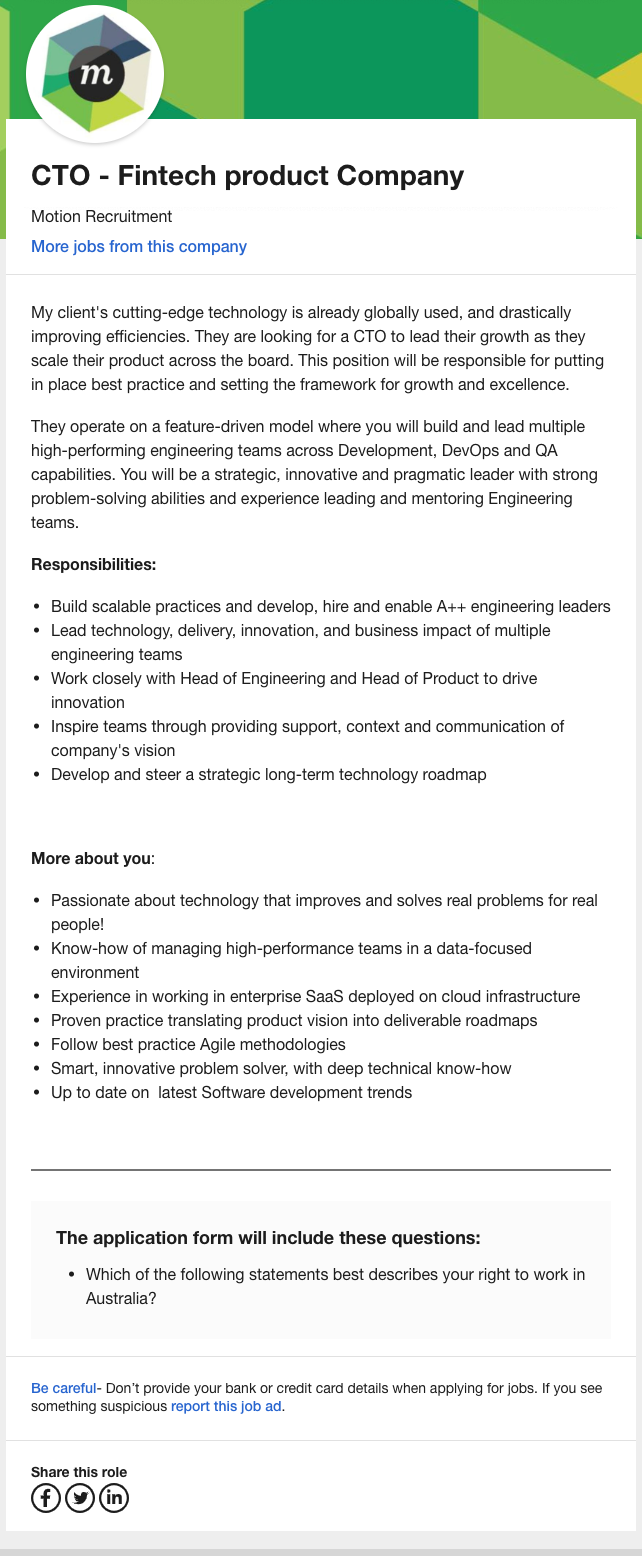
Back | Link to ad
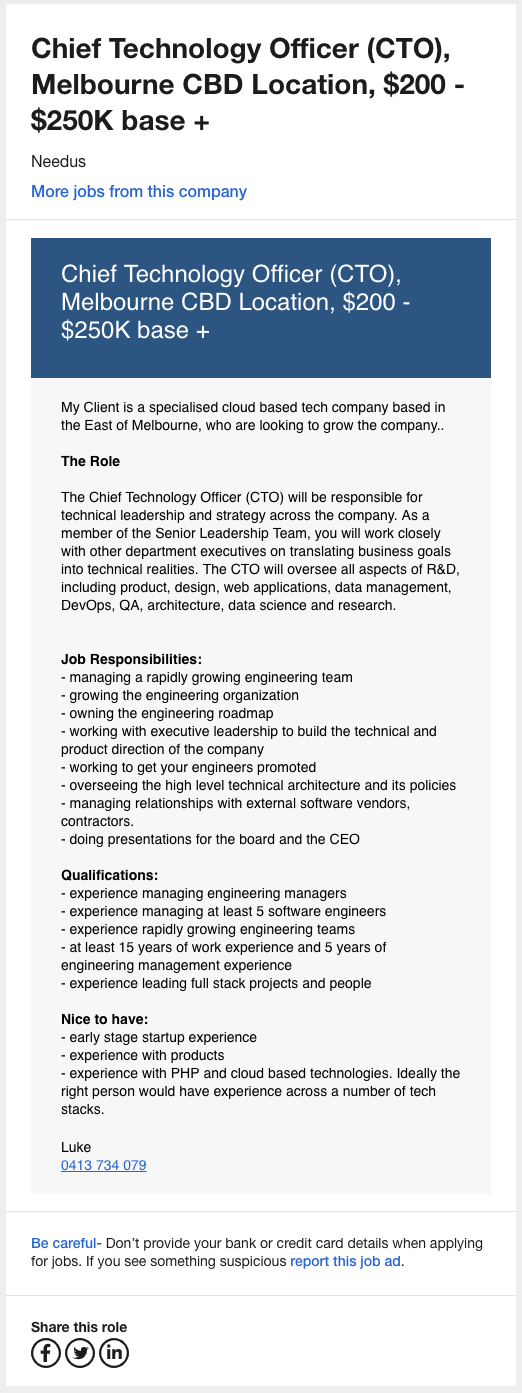
Back | Link to ad
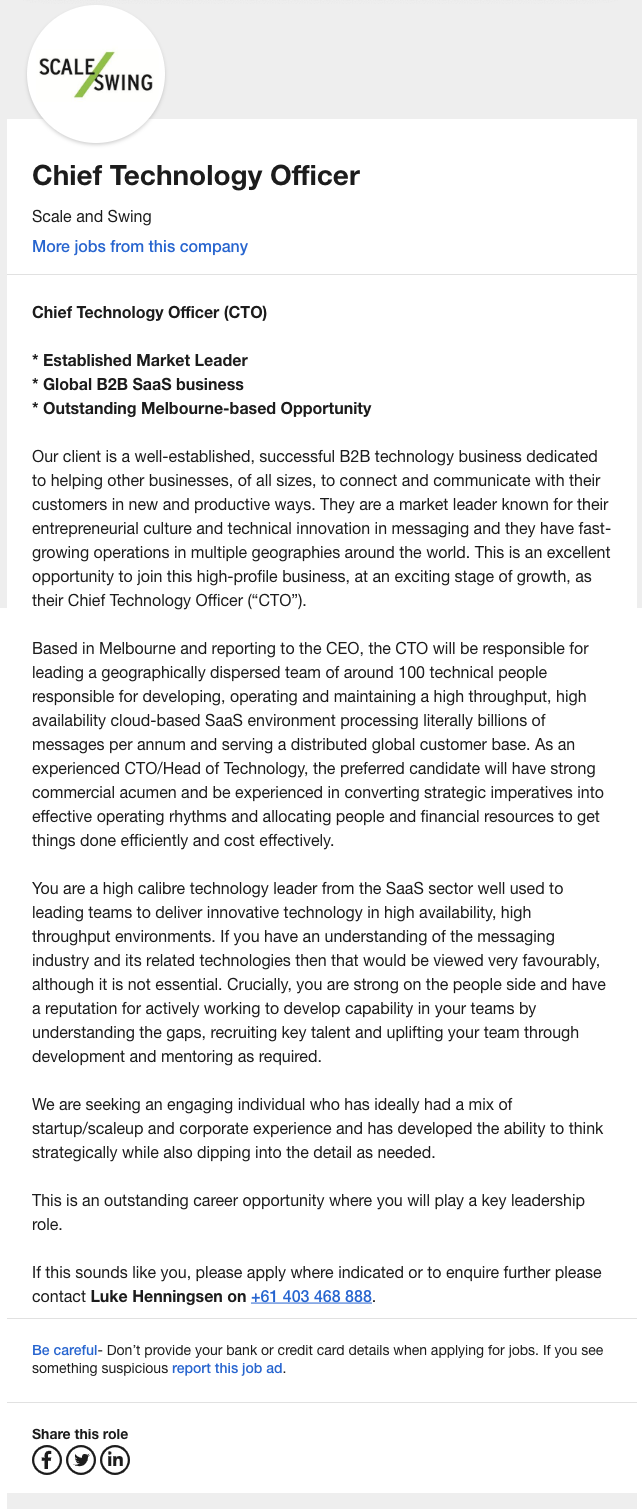
Back | Link to ad
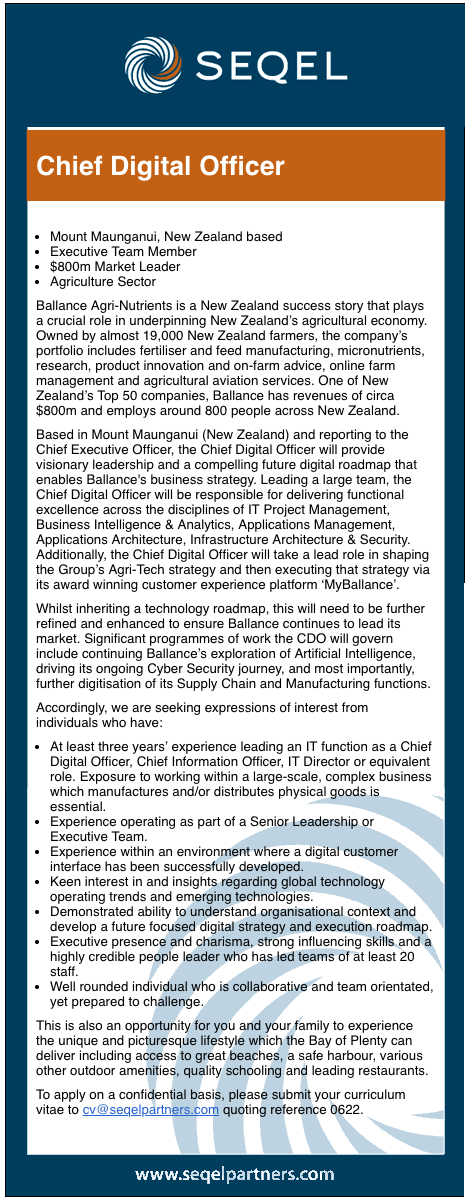
Profile

I partook in three online surveys to collect information on my
personality and learning style. The three tests I took were:
Conclusions
The test results produced what I had already known about myself, quiet,
sociable, deterministic, equal parts process, and intuition, occasionally
stubborn but generally thoroughly researched, with low emotional
reactivity except where it counts. In a team setting, I am conscious of
not dominating discussion, process, or outcomes, and try to strike a
balance between occasional guidance and frequent collaboration. I enjoy
working with people who can balance ambition and opinions with the needs
of the team; many voices often lead to the best solutions.
Test Results
Myers-Briggs Type Indicator
Interestingly, the results from the Myers-Briggs test has not changed
since I was in high school, I received a classification of INFJ-T which 16
Personalities labels as an “Advocate”:
The Advocate personality type is very rare, making up less than one
percent of the population, but they nonetheless leave their mark on the
world. Advocates have an inborn sense of idealism and morality, but what
sets them apart is that they are not idle dreamers. These individuals are
capable of taking concrete steps to realize their goals and make a
lasting positive impact.
People with this personality type tend to see helping others as their
purpose in life. Advocates can often be found engaging in rescue efforts
and doing charity work. However, their real passion is to get to the
heart of the issue so that people need not be rescued at all.
My personality makeup was as follows:
- 78% introverted, 22% extraverted
- 64% intuitive, 36% observant
- 51% feeling, 49% thinking
- 75% judging, 25% prospecting
- 71% turbulent, 29% assertive
To learn more about my Myers-Briggs personality type, please go to https://www.16personalities.com/infj-personality
HEXACO Personality Inventory
The HEXACO personality inventory provided a much more detailed analysis
of my personality type, providing a point on a range and where I sit
relative to others on a spectrum.
The results are too detailed to list here, however the main takeaways
were:
- High on honesty and humility
- Low on emotionality
- Slightly lower than the median on extraversion
- Low on agreeableness, however I dispute with this 😉
- Very high on conscientiousness
- And a low on openness to experience
To see the results in detail please see the exported results here and here
VARK learning style test
The VARK learning style test classified me as a multimodal learner,
preferring a range of styles rather than one, trending towards visual and
kinaesthetic learning. My result seems to reflect reality, where I will
often watch online courses and then work through additional examples to
cement the learning. I will resort to white papers, documentation, and
articles where I must, however, prefer the “watch then do and repeat” way
of learning.
My scores were as follows:
- Visual: 11
- Aural: 6
- Read/Write: 6
- Kinaesthetic: 13
To learn more about multimodal learners, go to http://vark-learn.com/strategies/multimodal-strategies
References
- A. Grant Ph.D. (2013).
Goodbye to MBTI, the Fad That Won’t Die. [online]
Psychology Today.
Available at: https://www.psychologytoday.com/au/blog/give-and-take/201309/goodbye-mbti-the-fad-won-t-die
[Accessed 31 Aug. 2019].
- O. Khazan. (2018).
The Myth of 'Learning Styles'. [online]
The Atlantic.
Available at: https://www.theatlantic.com/science/archive/2018/04/the-myth-of-learning-styles/557687
[Accessed 31 Aug. 2019].
Credits

Contact
Project
Work hub application
Motivation
Office environments have multiple ways of communicating, including
email, IM, VoIP, etc. When these sources are intermingled with
appointments, reminders, and tasks, it can be overwhelming to stay on
top of key information and perform job responsibilities without
distraction.
Additionally, not every communication is equally important, or
requires immediate attention, the University of California states that
only 30% of email requires attention yet spend 23% of their days
actioning email[1].
Psychology Today states that task switching can cost 40% of
productivity[2], detrimentally affecting
core job output.
Yet,
inaction or delay in important communications, from an awaited email
or
IM response, to inaction on task allocations in PM platforms, can have
exponential flow-on effects for the teams and organisations
productivity.
Overview
I propose developing a website that will integrate with productivity
application APIs, and email servers, to provide a central information
hub. The end user can consult this hub to provide a consolidated view
of all notifications so that they can, view all important messages,
appointments, and reminders.
This website will operate as either a wallboard, or as an
interactive dashboard, providing constant updates to the user’s
currently assigned work items, meeting requests, and important unread
communications.
The system will also provide more generic information, such as time,
date, news, and weather, avoiding further distractions or task
switching.
Description
The key features of the application will be:
Appointment management
- The application will show any currently running appointment and how
long it has left to go
- The next appointment time, a countdown to the commencement of that
appointment, and where it is
- A list of subsequent appointments for the rest of the day
Messages
- The number of unread IM notifications for multiple providers by
total, and from contacts regularly interacted with. Some of these IM
providers may include Slack, Microsoft Teams, Facebook Messenger, and
others
- The number of unread email messages by total, and from contacts
regularly interacted with. Some of these email providers and
technologies may include, POP, IMAP, Gmail, Office 365, and others
Development work items
- Pull requests waiting on source code PaaS platforms. Some of these
PaaS providers might include GitHub, Bitbucket, CodeCommit, and others
- Hooks into Jira to show assigned items broken up by status (e.g.
backlog, development, testing, etc.)
To do items
- Assigned and incomplete task items from SaaS task platforms. Some
of these platforms might include Trello, Todoist, Office 365, Gmail,
and others
Geo-location relevant information
- Can be set either by the browser’s location or manually via
user settings
- The current date, time, and weather
- The current day’s weather forecast
- The next three-day weather forecast
- A local and international news ticker, with configurable source
sites, and content categories
Security and usability will be a permanent concern for the
application. To ensure the application is usable and desirable, the
application will need:
Multiple layers of best-practice security
- Allow logging in via social providers via OpenID Connect best
practice (e.g. login with Google, Facebook, Microsoft, GitHub, etc.)
- The application should store no credentials unless completely
necessary, thus authentication to SaaS and PaaS platforms should be
through OAuth 2.0 flows, ensuring API access is done with the user's
approval
- Where credential storage is needed (e.g. POP and IMAP
synchronisation), securely storing reversibly encrypted credentials
will be done outside the application, and in a secure HSM or
equivalent device. Keys to the encrypted storage should be rotated on
a regular basis and individual to the user
- The application should support local privacy laws, such as HIPPA,
GDPR and ISO/IEC 27001
- All data synchronisation with third-party providers should be down
outside the publicly accessible application, in a private subnet
Accessible on multiple devices, and by multiple user profiles
- The site must have a reactive UI, so that the site works on
multiple devices, of varying resolution and aspect ratios
- Have a touch and desktop interface, so that the functionality is
accessible on portable devices, as easily as it is on desktops
- Support impaired users through modern web development practices,
making the site accessible by those with low vision or poor motor
control
- Support native languages in countries the application is available
in, such as English, Chinese, Hindi, Japanese, French, German, and
Italian
As close to zero downtime as possible
- Utilising the auto-healing features of cloud platforms, such as
PaaS services like Kubernetes, or FaaS services like AWS Lambda
- Geographically dispersed deployment, ensuring that if one
datacentre goes offline, others can compensate for the load
- Scaling to demand, ensuring that application resources directly
correlate with the usage patterns. This will additionally reduce cost,
as the application will use minimal resources, especially in low
demand periods such as weekends
Skills Required
- Experience in git
- One programming language capable of running on Linux (e.g. Java,
.Net Core, JavaScript, Python, etc.) that can operate as a backend
application
- One programming language that can act as a web front end (e.g.
JavaScript or Web Assembly compliable language)
- Experience in storing and retrieving data in a database
- Experience in building responsively designed web pages
- Experience in building serverless application backends
- Experience in building continuous integration and delivery
pipelines
- Experience in a cloud provider, such as AWS, Azure or GCP
- Experience in generating and calling RESTful and GraphQL APIs
- Experience in calling Exchange, IMAP, and iCal servers
- Experience in Docker containerisation and FaaS development
- Experience in OpenID Connect and social login providers (e.g. sign
in with Google, Facebook, GitHub, etc.)
Tools and Technology
- PC or Mac capable of running modern IDEs and web browsers and web
applications
- One programming language capable of running on Linux (e.g. Java,
.Net Core, JavaScript, Python, etc.) that can operate as a backend
application
- One programming language that can act as a web front end (e.g.
JavaScript or Web Assembly compliable language)
- One database technology (e.g. Postgres, MySQL, Cassandra, DynamoDB
or MongoDB)
- A location to host source code (e.g. GitHub, GitLab or AWS
CodeCommit)
- A hosting provider such as AWS, Azure of GCP
- A continuous deployment platform (e.g. Jenkins, BuildKite or
Bamboo)
- An IDE that supports backend code development (e.g. Visual Studio
Code, IntelliJ or PyCharm)
- An IDE that supports front-end code development (e.g. Visual Studio
Code, IntelliJ WebStorm or Reactide)
Outcome
Through consolidating communication streams into a single, digestible
overview, this application will:
- Reduce the time needed to continually switch between communication
mechanisms, freeing users to focus on more valuable work
- Reduce or eliminate missed correspondence, helping users to ensure
better coverage of their work-related communications
- Lessen the distraction of multiple systems arbitrarily distracting
its users, reducing unproductive task switching, and enabling a
greater velocity of work, in turn, improving the velocity of the
organisation the user works for
- Reduce project rework and misaligned expectations, due to missed
communications between individuals or teams
- Allow better adoption of new and evolving communication streams
within organisations, permitting organisations to switch tooling more
rapidly, and reducing ghettoising of legacy communication systems and
those who still use them
References
- Mark, G., Iqbal, S., Czerwinski, M., Johns, P. and Sano,
A. (2016).
Email Duration, Batching and Self-interruption: Patterns of
Email Use on Productivity and Stress. [online]
Ics.uci.edu.
Available at: https://www.ics.uci.edu/~gmark/Home_page/Publications_files/
CHI%2016%20Email%20Duration.pdf
[Accessed 7 Sep. 2019].
- Weinschenk Ph.D., S. (2019).
The True Cost Of Multi-Tasking. [online]
Psychology Today.
Available at: https://www.psychologytoday.com/au/blog/brain-wise/201209/the-true-cost-multi-tasking
[Accessed 7 Sep. 2019].
Elements
Text
This is bold and this is strong. This is
italic
and this is emphasized.
This is superscript text and this is subscript
text.
This is underlined and this is code: for (;;) { ... }.
Finally, this is a link.
Heading Level 2
Heading Level 3
Heading Level 4
Heading Level 5
Heading Level 6
Blockquote
Fringilla nisl. Donec accumsan interdum nisi, quis
tincidunt felis sagittis eget tempus euismod. Vestibulum ante ipsum
primis in faucibus vestibulum. Blandit adipiscing eu felis iaculis
volutpat ac adipiscing accumsan faucibus. Vestibulum ante ipsum
primis
in faucibus lorem ipsum dolor sit amet nullam adipiscing eu felis.
Preformatted
i = 0;
while (!deck.isInOrder()) {
print 'Iteration ' + i;
deck.shuffle();
i++;
}
print 'It took ' + i + ' iterations to sort the deck.';
Lists
Unordered
- Dolor pulvinar etiam.
- Sagittis adipiscing.
- Felis enim feugiat.
Alternate
- Dolor pulvinar etiam.
- Sagittis adipiscing.
- Felis enim feugiat.
Ordered
- Dolor pulvinar etiam.
- Etiam vel felis viverra.
- Felis enim feugiat.
- Dolor pulvinar etiam.
- Etiam vel felis lorem.
- Felis enim et feugiat.
Icons
Actions
Table
Default
| Name |
Description |
Price |
| Item One |
Ante turpis integer aliquet porttitor. |
29.99 |
| Item Two |
Vis ac commodo adipiscing arcu aliquet. |
19.99 |
| Item Three |
Morbi faucibus arcu accumsan lorem. |
29.99 |
| Item Four |
Vitae integer tempus condimentum. |
19.99 |
| Item Five |
Ante turpis integer aliquet porttitor. |
29.99 |
|
100.00 |
Alternate
| Name |
Description |
Price |
| Item One |
Ante turpis integer aliquet porttitor. |
29.99 |
| Item Two |
Vis ac commodo adipiscing arcu aliquet. |
19.99 |
| Item Three |
Morbi faucibus arcu accumsan lorem. |
29.99 |
| Item Four |
Vitae integer tempus condimentum. |
19.99 |
| Item Five |
Ante turpis integer aliquet porttitor. |
29.99 |
|
100.00 |










